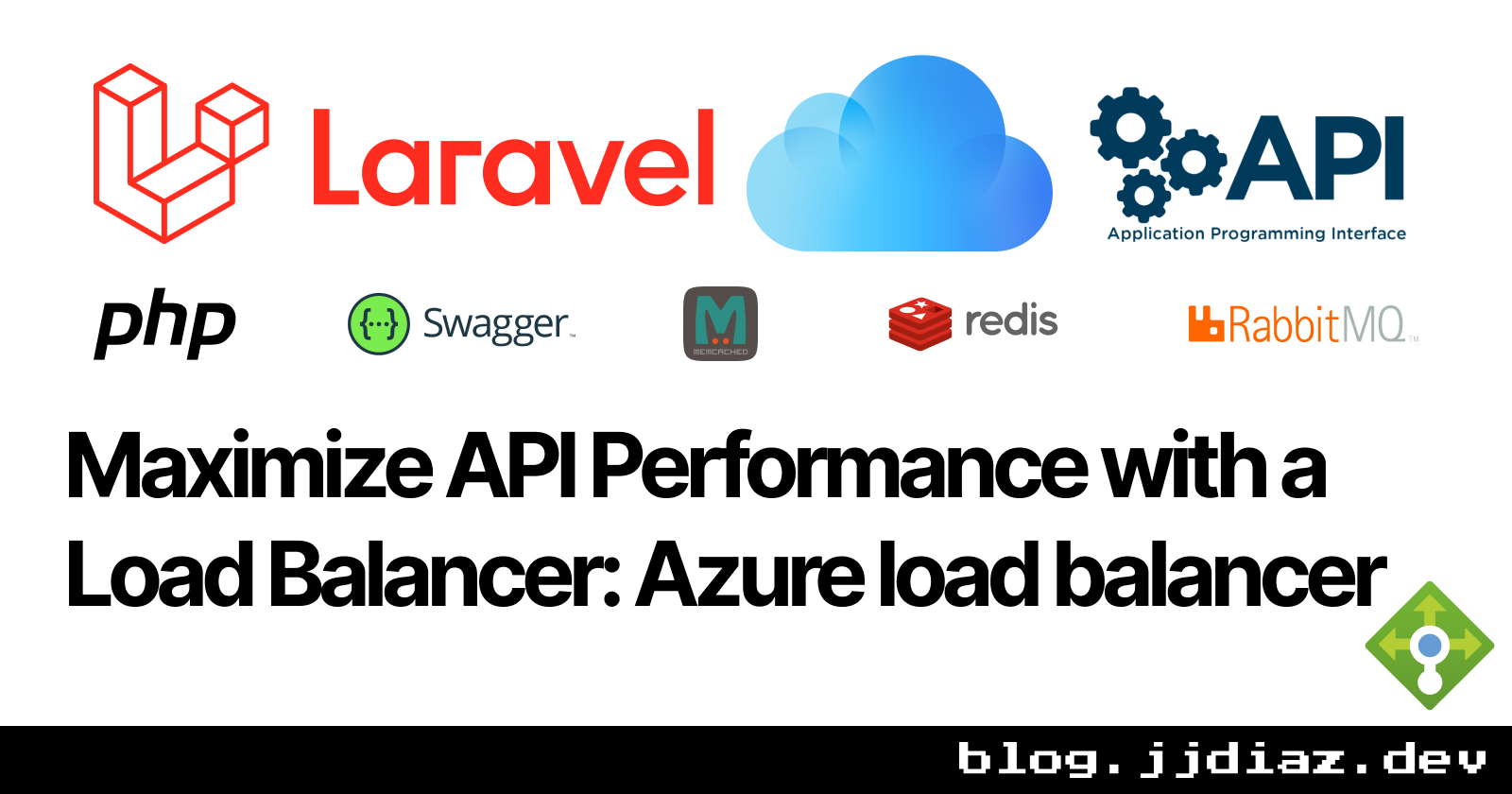Maximize API Performance with a Load Balancer: Azure load balancer
 Jose Diaz
Jose Diaz
Azure Load Balancer is a load balancer provided by Microsoft Azure that enables you to distribute incoming requests across multiple servers, improving the scalability and reliability of your Laravel API. In this post, we'll look at how to set up and use an Azure Load Balancer with a Laravel API.
To set up an Azure Load Balancer, you'll need to have an Azure account and some servers set up to handle the incoming requests. You can use Azure Virtual Machines or any other servers that are running a supported operating system. You'll also need to ensure that your servers are properly configured to handle incoming requests, such as installing and configuring a web server and deploying your Laravel application.
Once you have your servers set up and ready to go, you can create an Azure Load Balancer using the Azure portal or the Azure CLI. To create an Azure Load Balancer using the Azure portal:
Go to the Azure portal and sign in.
Click on the "Create a resource" button in the top left corner.
Search for "Load Balancer" and click on the "Load Balancer" item in the search results.
Click the "Create" button to create a new load balancer.
Follow the prompts to configure your load balancer, including selecting the resource group, location, and virtual network.
Click the "Create" button to create your load balancer.
Once your Azure Load Balancer is created, it will automatically start distributing incoming requests to your servers based on the configured protocol and port. You can view the status of your load balancer and the requests being handled by your servers in the Azure portal.
You can also use the Azure CLI to create an Azure Load Balancer. To create an Azure Load Balancer using the Azure CLI:
Install the Azure CLI on your local machine.
Configure the Azure CLI with your Azure credentials using the
az logincommand.Run the following command to create an Azure Load Balancer:
az network lb create --resource-group my-resource-group --name my-load-balancer --sku standard --frontend-ip-name my-frontend-ip --backend-pool-name my-backend-pool
Replace my-resource-group with the name of your resource group, my-load-balancer with the desired name for your load balancer, my-frontend-ip with the name of your frontend IP configuration, and my-backend-pool with the name of your backend pool. You can also use the --sku option to specify the SKU of your load balancer.
Once your Azure Load Balancer is set up and running, you can start using it to distribute incoming requests to your Laravel API. Your Laravel API will automatically receive the incoming requests and handle them as usual, with the added benefit of being able to scale to handle a larger number of requests thanks to the load balancer.
Using an Azure Load Balancer can be a powerful way to improve the scalability and reliability of your Laravel API. By distributing incoming requests across multiple servers, an Azure Load Balancer can help ensure that your API can handle a large number of requests without breaking down. Whether you use the Azure portal or the Azure CLI to set up your Azure Load Balancer, implementing a load balancer can have a significant impact on the performance and reliability of your Laravel API.
Subscribe to my newsletter
Read articles from Jose Diaz directly inside your inbox. Subscribe to the newsletter, and don't miss out.
Written by

Jose Diaz
Jose Diaz
Head of IT @ IMCW. +15 years coding and leading teams. Passionate about building scalable and clean code software. Experience leading software development teams and building applications from scratch to deploy them to production environments. Courageous to face new challenges and without barriers at work, to evolve and improve professionally. Eager to learn and improve.